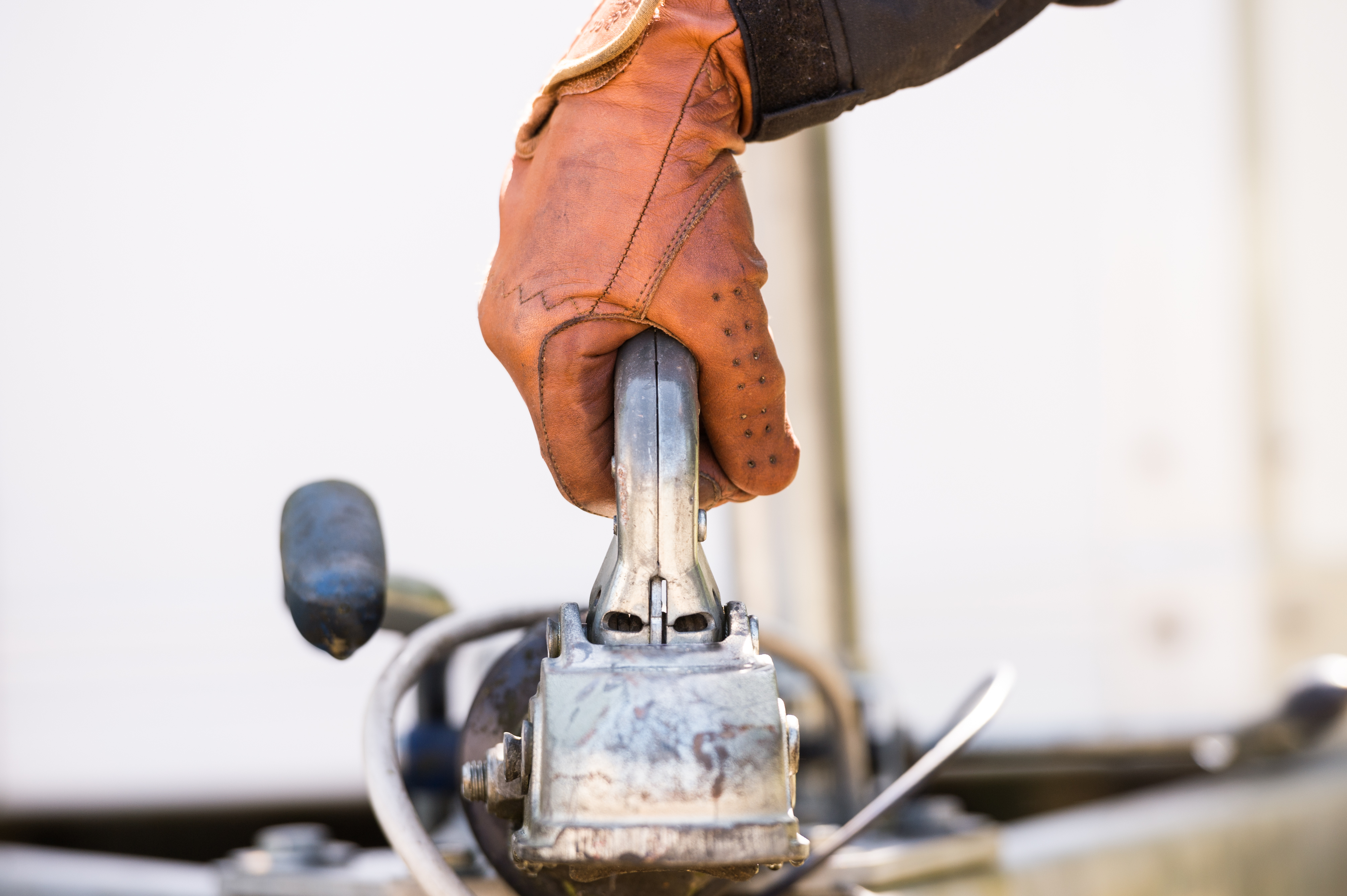You're considering towing your horses. One of the most confusing and scary aspects of this adventure is the myriad kinds of trailer hitches available to buy. It might seem like there...

You’re considering towing your horses. One of the most confusing and scary aspects of this adventure is the myriad kinds of trailer hitches available to buy. It might seem like there are hundreds. In reality, there are only a handful, but they come in a large variety of sizes and capacities.
Of course, you want to select the right hitch, not only so it matches your trailer’s coupler, but-probably most importantly-so that it has adequate capacity to safely carry the full weight of your horses and any additional loads.
Glossary of Terms
To start, let’s define some terms you’ll need to know to discuss hitches and towing with hitch and trailer retailers.
Obviously, when you start pulling your trailer-especially uphill-the forces from the weight of your trailer, horses, and other items loaded in it put an additional strong sideways force on the hitch and its mounting point (often a hitch ball) and on the trailer coupler.
Gross Vehicle Weight (GVW): This term represents a rating assigned by the manufacturer to a tow vehicle (truck). This rating tells you the maximum amount the truck and its complete load can weigh and includes all fluids-such as gasoline, oil, and coolant-as well as all passengers and all other payload on the truck itself.
Combined Gross Vehicle Weight (CGVW): This is the total gross weight of tow vehicle and trailer, combined.
Coupler: The trailer part that “couples,” and makes the connection to the tow vehicle.
Hitch Ball: The part of the hitch on the tow vehicle to which a ball coupler connects. Hitch balls come in several sizes, depending on the size of the load you’ll be towing. They are used with most hitch types, though they are not used on a fifth-wheel hitch.
Hitch Types
The easiest way to understand hitches is to break them down by type. Essentially, there are five different hitch types: 1) bumper hitch; 2) weight-carrying hitch; 3) weight-distribution hitch; 4) gooseneck hitch; and 5) fifth-wheel hitch. Here’s a rundown on each type.
Bumper hitch: This hitch comes as a standard unit on most pickup trucks. It’s usually nothing more than a flat reinforced section in the middle of the rear bumper with a hole drilled in the center to accept a ball to mate with the trailer’s coupler. These are low-weight hitches capable of hauling small loads.
It might be possible to haul a small horse in a single-horse trailer, but I would be afraid of risking my horse’s life to the strength of a bumper and its mountings. The usual maximum load capacity is only 2,000 pounds and includes the weight of the trailer and all payload items. Bigger trucks may have a higher capacity, but essentially, bumper hitches are made for the occasional light load for small trucks, such as log splitters or utility wagons.
Weight-carrying hitch: These hitches put the trailer’s weight and start/stop/turn forces onto the tow vehicle’s frame rather than on just the truck’s bumper. While this is fine for big trucks, keep in mind that the weight is still on the back of the vehicle and weight shifts in the trailer will still cause strong turn forces on smaller trucks. The hitch will often offer a removable drawbar. In this case, the hitch side will have a square receiver, usually 2″ x 2″ (see top photo above). That means it “receives” a 2″ x 2″ square metal tubular drawbar with a hitch ball attached; this is also called a “ball platform” (see bottom photo above).
Ball platforms come in various degrees of “drop” so you can match the height of the trailer coupler with the tow vehicle’s receiver. Weight-carrying hitches can generally accept complete loads up to 3,000 or 3,500 pounds, though on bigger trucks, this may get as high as 8,000 pounds gross trailer weight and 800 pounds maximum tongue weight.
Weight-distribution hitch: Weight-distribution hitches use the same frame-mounted receivers as weight-carrying hitches, but they add a weight-distribution system that includes spring bars connected between the tow vehicle’s receiver and trailer to apply leverage. This distributes the trailer’s weight to all of the tow vehicle axles and the trailer, which allows the tow vehicle to pull a heavier trailer. It also can provide a more level ride.
You’ll also find you have more effective steering and braking for better and safer control. Depending on your tow vehicle and the hitch’s weight class, some can support up to 12,000 pounds gross trailer weight and 1,200 pounds maximum tongue weight. At this level, you’re dealing with a general towing hitch that can carry significantly larger loads.
Gooseneck hitch: This type of hitch connects to trailers using a “gooseneck.” Gooseneck trailers couple to a heavy-duty ball installed in the bed of the tow vehicle, and they have a high load capacity. The ball connects through the vehicle’s bed to the hitch itself, which is connected to the tow vehicle’s chassis. This arrangement is often used on bigger pickup trucks having large tow capacities. On some units, the ball will fold over or drop down so you can use the truck’s bed without interference.
Fifth-wheel hitch: Fifth-wheel hitches connect with a hinged plate and a pin rather than a heavy-duty ball. For these hitches, you need to pay attention to the “pin weight rating” rather than a “ball weight rating.” A fifth-wheel hitch is the design used on tractor trailers to move freight.
Most fifth-wheel hitches must be bolted into the truck bed and are not easily removable, so moving a refrigerator or furniture with your truck will be much harder to accomplish around the structure of the hitch. Determination of which hitch you’ll need depends on which one comes on your trailer and your specific trailer-pulling needs.
Weight Classes
Now that you know about hitch types, it’s important to point out that these types come in different sizes called “weight classes.”
When determining maximum towing capacities, you must view the entire tow vehicle/hitch/trailer as a combination. And just as with a chain, you can’t exceed the capacity of its weakest link.
For example, if you want to haul a four-horse trailer, the trailer must be able to carry the weight of your four horses. If some or all of them are draft horses, the trailer’s weight capacity must be higher than if you’re hauling only normal-sized horses or ponies.
In addition, the hitch and coupler must also be able to handle the full load of the trailer and its payload, as must your truck. The towing capacities of all these components must meet or exceed the load to be towed. The lowest weight hauling capacity of any one item determines the maximum capacity of your entire truck/hitch/trailer combination.
Hitch-Ball Sizes
If you’re towing a smaller load, you’ll likely use a hitch ball on your tow vehicle rather than a gooseneck or fifth-wheel hitch. Trailer hitch balls come in many sizes. And, unfortunately, that fact can be another source of confusion. Two balls of the same size may have different ratings from each other depending on their strength or because of the shank size of the bolt connecting them to the hitch.
Be sure that the rating of the actual hitch ball you purchase, plus its bolt and the hitch itself, all match or exceed the maximum weight you’ll haul with your truck and trailer.
Safety Above All Else
As you can see, hauling a trailer involves a combination of items all rated for the amount of weight you need to tow. Each item, including your truck, must be rated the same or greater than the maximum weight of the trailer and its complete load. Now you can also see that, while there initially seem to be many hitches, there really are only a few and that they come in different sizes.
The best way to assure that you and your horses will be safe when towing is to select your tow vehicle, trailer, and all hitch parts with the help of the truck or trailer dealership, or the hitch retailer. This is not only to assure that all the parts will be able to safely carry the weight you’re hauling. It’s also because there are additional components and considerations beyond the scope of this article that must be right, such as electrical hookup, trailer breaks, safety chains, the breakaway break (activates your trailer’s brakes if it separates from your truck), and more.
You’re the one responsible for getting all this right. So take advantage of your dealership to get expert help. Tell the representative exactly what you’re hauling and where you intend to go with your trailer and horses. Chances are quite good they’ll provide all the help you need.


"*" indicates required fields